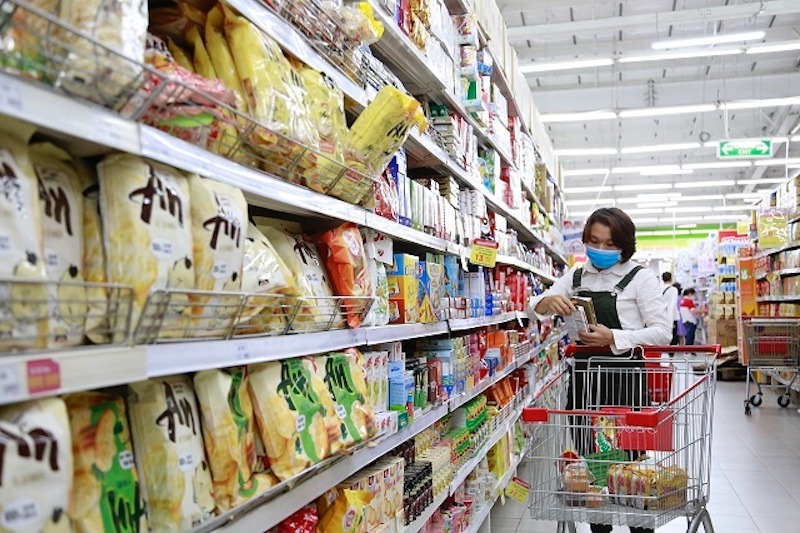Vietnam’s retail sector urged to change for growth
Local experts believed that to boost competitiveness, Vietnam's retailers must actively restructure, innovate business plans, and strengthen connectivity.
Supporting the ideas, Chairman of the Association of Vietnam Retailers Nguyen Anh Duc, in an interview with Hanoimoi Newspaper, pointed out how these strategies are essential to trade and services growth and make the retail sector a key pillar of the economy.
What are the key trends shaping Vietnam's retail sector?

Nguyen Anh Duc, Chairman of the Association of Vietnam Retailers. Photo: VGP
Vietnam's retail sector is undergoing rapid changes driven by changing consumer behavior, digitalization, and evolving market demands. Shoppers now prioritize convenience, speed, and smarter purchase, requiring technology-driven retail solutions.
Post-pandemic, there has been rising focus on health, safety, and sustainability, which is reshaping retail strategies, especially beyond 2025.
In addition, retailers are optimizing efficiency and adding value, restructure product offerings, streamline operations, and refine market positioning.
What about the rise of omnichannel retailing and actions to maximize it?
Domestic retailers using both offline and online channels to enhance the shopping experience. However, success depends on personalization, retail strategies must align with consumer behavior and preferences.
Retailers should integrate technology-driven sales channels while leveraging the strengths of traditional retail and tailor their e-commerce and digital strategies based on Vietnamese products and consumer demand.
What are the key challenges facing Vietnam’s retail sector despite its rapid growth?
Vietnam's retail industry is on a strong growth trajectory, but several challenges remain, including operational inefficiencies, slow digital transformation, and weak adaptation to global trends caused by limited experience and inadequate preparation.
Moreover, poor logistics and supporting industries disrupt supply chains and lead to inefficient distribution while the lack of coordination among production, wholesale, and retail hinders cost optimization and value enhancement.
To overcome these hurdles, the sector must accelerate digital adoption, strengthen supply chain resilience, and foster collaboration between businesses to improve market efficiency and consumer experience.
What should domestic retailers do to drive growth and strengthen their position in the market?

Big C Thang Long supermarket. Photo: Thanh Hai/The Hanoi Times
Domestic retailers should leverage their core strengths and understanding of local consumer behaviors rather than overreaching into unrelated sectors to increase competitiveness and long-term sustainability.
In addition, they need to strengthen partnerships with industry associations, suppliers, and businesses across various sectors for a more resilient and dynamic retail ecosystem.
Furthermore, retail firms need to manage balanced development at all stages of the value chain while logistics and supporting industries must be strong enough to help those retailers in the economy.
What will the association do in support of domestic retailers?
We are committed to advocating for policy reforms that support local retailers while fostering greater collaboration among domestic businesses to enhance competitiveness.
Furthermore, we will monitor global retail trends and provide timely updates to help businesses improve their market adaptability.
To create momentum for the retailer sector, there should be three key factors namely boosting customer conference index (CSI), restructuring the retail sector, and restructuring the value chain of Vietnamese products.
Specifically, it requires efforts to increase the purchasing power and domestic businesses' financial health to stimulate spending.
Domestic retailers also need to re-evaluate their business models and determine the balance between e-commerce and physical stores, while catering to different customer segments.
At the same time, restructuring Vietnam's value chain to better integrate with global supply chains will create a more coordinated system, ensuring greater value for consumers and supporting sustainable economic growth.
Thank you for your time.
|
Vietnam’s retail sector continued its upward trajectory, with total retail sales of goods estimated at VND878.4 trillion (US$34.4 billion) in the first two months, accounting for 77.2% of total consumer spending. Several key cities posted strong retail sales growth, with the northern port city of Haiphong recording a 9.4% increase, Cantho growing by 8.9%. The central coastal city of Danang recorded 8.7% increase, followed by Hanoi with a 7.3% gain, and Ho Chi Minh City 7.1%. |








